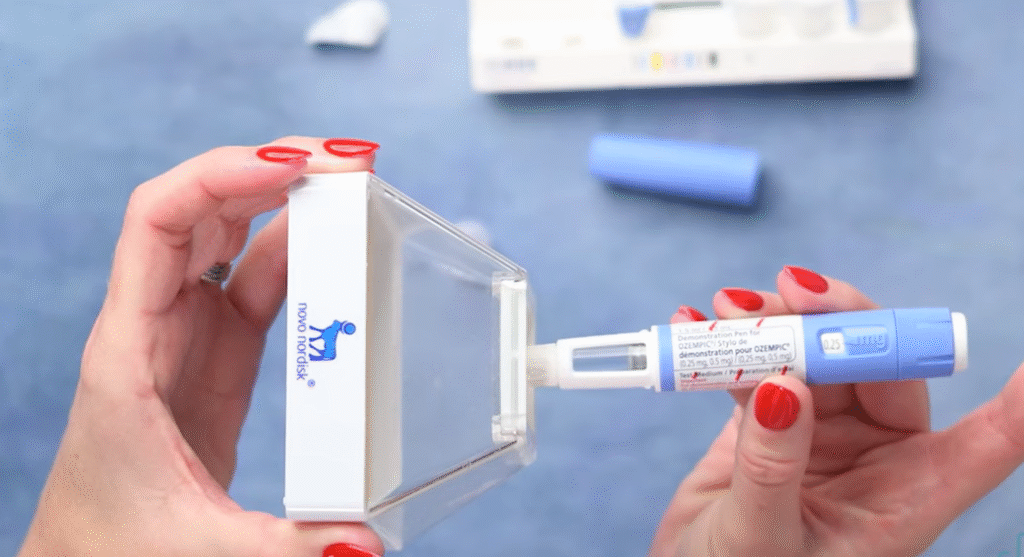Jaclyn Bjorklund’s case became the first of numerous lawsuits claiming that Ozempic caused stomach paralysis when she collapsed in Louisiana in 2023 due to excruciating stomach pain. She was frequently admitted to the hospital due to her gastroparesis, which prevented her from properly digesting food. Similar lawsuits soon followed, primarily relating to the crippling side effects of Novo Nordisk’s diabetes medication Ozempic and its sister brands. Nearly 2,000 claims had been combined into multidistrict litigation in Pennsylvania by the beginning of 2024, and experts estimated that the potential damages could exceed $2 billion.
The conflict between consumer demand and medical innovation is remarkably well-captured in the Ozempic story. It was initially created to treat type 2 diabetes and was very effective at controlling weight because it slowed digestion and suppressed appetite. Stars like Tracy Morgan, Fat Joe, and Kandi Burruss openly discussed using it, and Macy Gray reported experiencing excruciating constipation as a side effect. Hollywood swiftly embraced it. Despite Ozempic’s medical risks being largely disregarded until patients started to disclose their terrible results, these admissions made it a cultural phenomenon that was almost like a beauty fad.
Physicians have become more concerned, pointing out that off-label use has drastically decreased the medication’s availability for diabetics who desperately need it. Brigham and Women’s Hospital’s Dr. Caroline Apovian expressed frustration that diabetic patients are unable to obtain a highly dependable blood sugar-controlling medication due to shortages caused by celebrity-fueled demand. Her argument highlights the stark difference between cosmetic use and medical necessity, which has exacerbated the moral dilemmas underlying these lawsuits.
| Category | Details |
|---|---|
| Case | Ozempic Lawsuit – Stomach Paralysis (Gastroparesis) |
| Drug | Ozempic (semaglutide), GLP-1 receptor agonist |
| Manufacturer | Novo Nordisk |
| Other Drugs Involved | Wegovy, Rybelsus (Novo Nordisk), Mounjaro (Eli Lilly) |
| Allegations | Stomach paralysis (gastroparesis), intestinal blockage, gallbladder issues, vision loss, pancreatitis |
| First Lawsuit Filed | August 2023 (Louisiana – Jaclyn Bjorklund) |
| Legal Action | Consolidated into Multidistrict Litigation (MDL No. 3094) in Pennsylvania, 2024 |
| Pending Cases | 1,800+ as of August 2025 |
| Estimated Liability | $2 billion+ |
| Reference | Drugwatch.com |

The accusations are especially grave. According to the plaintiffs, Ozempic can result in intestinal blockages, pancreatitis, gallbladder disease, stomach paralysis, frequent vomiting, and even unexpected blindness. Despite growing medical evidence, court filings indicate that patients were not adequately warned about these risks. By demonstrating a quantifiable connection between GLP-1 receptor agonists like semaglutide and an elevated risk of gastroparesis, a 2023 study that was published in JAMA Internal Medicine significantly strengthened the plaintiffs’ position. Lawyers contend that Novo Nordisk should have revealed the risk more explicitly because of this incredibly clear evidence.
For plaintiffs, consolidation into multidistrict litigation has proven to be extremely advantageous. In contrast to disjointed individual cases, the process makes the battle extremely efficient by streamlining discovery, guaranteeing consistent decisions, and permitting shared expert testimony. In 2026, legal experts anticipate bellwether trials that could influence settlement negotiations. The Ozempic lawsuit is one of the most expensive pharmaceutical mass torts in American history, and if juries rule in favor of the patients, the damages could be enormous.
For its part, Novo Nordisk disputes any misconduct and maintains that Ozempic is safe when taken as directed. The business highlights that no abnormalities other than anticipated side effects were found during clinical trials. Critics claim that the company ignored the fact that Ozempic’s initial approval was only for diabetes and instead promoted it with a remarkably similar zeal as a lifestyle medication. Novo Nordisk profited financially by permitting off-label use to flourish, but patients suffered long-term repercussions.
The court case also illustrates more general trends in the history of pharmaceuticals. The Fen-Phen scandal of the 1990s, in which a weight-loss medication was heavily promoted before being withdrawn due to irreversible cardiac damage, feels a lot like the Ozempic controversy. Lawsuits then, as now, compelled businesses to consider the conflict between public safety and profit.
The lawsuits have generated a cultural discussion about wellness and body image. The hasty adoption of Ozempic as a “quick fix” for weight loss illustrates how social pressure has fostered a favorable environment for pharmaceutical remedies, even in cases where the risks are not fully understood. Patients now have to deal with lifelong injuries after being seduced by glitzy advertisements or celebrity endorsements. Therefore, the lawsuits are social commentary on the extent to which people will go in order to achieve appearance as well as legal reckonings.
In addition to stomach paralysis, the cases have increased in recent months to include kidney damage, gallbladder inflammation, and abrupt vision loss. Lawyers contend that this greatly expands the scope of liability, especially in light of recent research showing that side effects may continue even after patients stop taking the medication. In certain cases, lifelong dietary restrictions and feeding tubes are described, creating an incredibly persistent picture of harm that cannot be justified by temporary weight loss.
The stories of the plaintiffs are incredibly relatable. Many people talk about their initial happiness at losing weight quickly, only to discover that the negative consequences were much more harmful than the weight they had lost. According to one plaintiff, she exchanged years of fighting obesity for a lifetime of fighting paralysis of the digestive system. One person compared it to being freed and then imprisoned in a different type of prison. These testimonies give the lawsuits an emotional component that elevates them above the level of routine business disputes.
Analysts think settlements are becoming more likely as early trials draw near. The way juries react to the evidence of gastroparesis and other complications will be tested in bellwether cases. Novo Nordisk might be compelled to enter into multibillion-dollar settlements to settle claims if they show sympathy for the plaintiffs. For patients, that result could be both practical and symbolic—a recognition that their pain is genuine and payment for the expenses they still incur.

